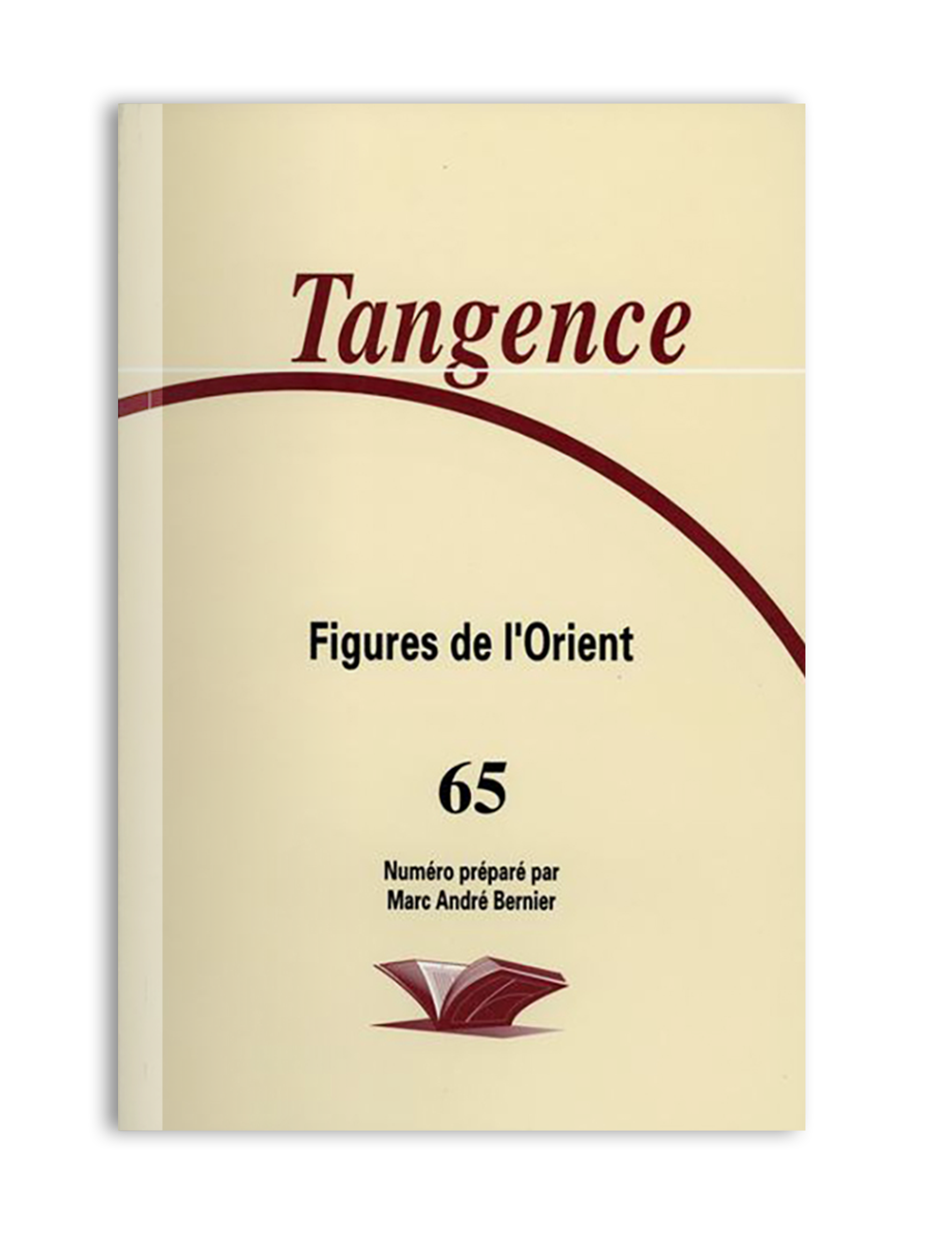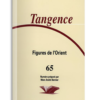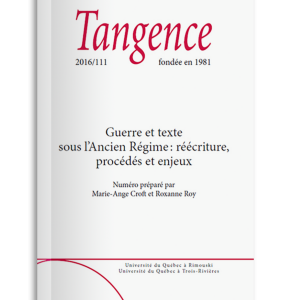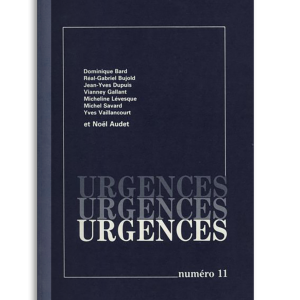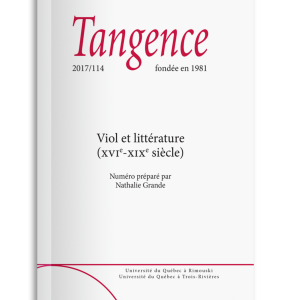N° 65, hiver 2001
Figures de l’Orient
Marie-Christine Pioffet
L’imagerie du sérail dans les histoires galantes du XVIIe siècle
Cette étude explore la représentation du sérail dans la fiction narrative du Grand Siècle. En dépit des contraintes qui pèsent sur les occupants de ce lieu, l’imaginaire romanesque transforme l’enceinte fermée des palais ottomans ou barbaresques en un univers voluptueux où règne la galanterie. Régal pour l’œil autant que pour tous les sens, les appartements féminins matérialisent l’opulence en ce qu’elle a de plus éclatant et renvoient un reflet familier au lecteur de l’époque, habitué au grand déploiement de richesses et d’ornements. Malgré la vigilance des eunuques, les sultanes trouvent toujours, que ce soit dans les jardins ou dans les multiples couloirs du palais, une échappatoire à l’enfermement du harem et à ses lois iniques.
The imagery of the seraglio in amatory tales from the seventeenth century
This study explores the ways in which the seraglio is shown in narrative fiction from the Great Century. In spite of the restrictions imposed upon those who inhabit this place, the imaginary world of fiction transforms the walled precincts of Ottoman or Berber palaces into a voluptuous world dominated by love affairs. A delight for the eye as well as for all the other senses, the women’s chambers give visual reality to an opulence of the most lavish sort and reflect familiar scenes for the reader of the period, accustomed to monumental displays of wealth and ornamentation. Outwitting the vigilance of the eunuchs, the sultans never fail to find, whether it be in the gardens or in the many corridors of the palace, ways to escape the confinement of the harem and its iniquitous laws.
***
Frédéric Charbonneau
Le goût du luxe. Asianisme et bonne chère à l’âge classique
Longtemps enveloppées dans une condamnation commune qui remonte à Platon, cuisine et rhétorique font à l’âge classique l’objet de discours parallèles. Dans l’une comme dans l’autre, le luxe, associé à l’Orient, est le point sur lequel porte l’essentiel du blâme : excès ornemental dans le style asiatique, abondance malsaine dans un amour de la bonne chère originaire de Perse. Cependant, la première moitié du XVIIIe siècle réhabilite momentanément le luxe de la table, devenu synonyme de progrès ; et si l’asianisme paraît alors avoir cédé la place au style naturel, la mode de l’orientalisme en signale peut-être la transposition littéraire.
The taste for luxury. Asianism and good food at the Classical age
Long enveloped in a common condemnation going all the way back to Plato, cooking and rhetoric were, during the Classical period, the subjects of parallel discourses. In both of them luxury, associated with the Orient, is the point upon which the essence of the reproach is focussed : ornamental excess in Asiatic style, and unhealthy copiousness in a love of good food originating from Persia. However the first half of the eighteenth century briefly resurrected gastronomic luxury, which had come to denote progress — and even if Asianism seemed at the time to have given way to natural style, the fashion for Orientalism may be evidence of its literary transposition.
***
Jacques Wagner
L’Orient voilé de Raphaël dans Gil Blas
La géographie romanesque ne constitue pas une dimension très consistante dans l’Histoire de Gil Blas de Santillane. Mais si Gil ne franchit aucune frontière nationale, ses complices ou d’autres personnages secondaires se montrent plus aventureux. Le plus mobile serait Raphaël, qui s’embarque pour Mayorque et parvient à Florence après un détour imprévu par ce qui tient lieu d’Orient dans ce roman : Alger. Deux aspects caractérisent le traitement par Lesage du topos oriental. Ses motifs sont d’abord repris avec humour dans un style à la fois romanesque (péripéties pleines de rires et de larmes) et caractéristique du théâtre sensible (reconnaissance familiale), du théâtre comique (farce amoureuse) et du théâtre tragique (haute trahison au nom d’un amour-passion). À cet aspect ludique s’ajoute une suggestion relative au lien entre l’Orient et la femme : la comédienne Lucinde trahit sa patrie par amour pour un renégat grec, ce qui entre en opposition avec le pôle masculin de la fidélité culturelle à l’Occident représenté par Raphaël, son fils.
Raphaël’s veiled Orient in Gil Blas
In History of Gil Blas of Santillana, the novel’s geography is not very consistent ; Gil never crosses any international border although his companions or other secondary characters show more spirit of adventure. The most mobile would seem to be Raphaël, who takes ship from Spain to Majorca and unexpectedly arrives in Florence after a detour through the city which, in this novel, replaces the Orient : Algiers. Two aspects of the story char-acterize the Lesagian handling of the topos. The Oriental material is taken up in a humorous novelistic style (wandering adventures filled with tears and laughter), in the style of melodramatic theatre (family recognition), comedy (the lovers’ farce in preparation for an elopement) and tragedy (high treason through passionate love). This playful aspect is completed with a suggestion concerning the link between the Orient and Woman (the actress Lucinda, mother of Raphaël, betrays her country out of love for a renegade Greek) as opposed to the masculine pole of cultural fidelity to the Occident, represented by Raphaël.
***
Marc André Bernier
La question du despotisme oriental en France sous le règne du sultan Zeokinizul
En 1746 paraît un roman curieux écrit aux confins du libertinage de mœurs et d’esprit, et souvent attribué à Crébillon fils : Les amours de Zeokinizul, Roi des Kofirans. Sous une figure orientale, le système des anagrammes donne évidemment à lire Louis Quinze pour Zeokinizul et François pour Kofirans. Aussi plaisant soit-il, ce titre comporte pourtant une énigme qui ne se réduit pas à un simple jeu de mots. En faisant paraître Louis XV sous la figure d’un Zeokinizul, l’ouvrage inscrit le rapport à l’autre au cœur même de la représentation de soi, suivant en cela une sorte de rhétorique du parallèle oratoire où s’entremêlent Orient et Occident. Au rebours des conceptions qu’illustrent le plus souvent les cultural studies, il s’agit donc de mettre en lumière une figure de l’Orient dont l’extrême complexité tient à la manière si singulière dont le XVIIIe siècle français chercha à raisonner sur l’ exercice du pouvoir et à raffiner sur les plaisirs en s’imaginant sous les traits d’un Orient fabuleux.
The question of Oriental despotism in France under the reign of the Sultan Zeokinizul
In 1746 there appeared a curious novel written at the outside limits of libertinism, both of manners and mind, and often attributed to Crébillon fils : Les amours de Zeokinizul, Roi des Kofirans. Beneath the Oriental personages, a system of anagrams clearly spells out Louis Quinze for Zeokinizul and François for Kofirans. As amusing as this may be, nevertheless the title presents an enigma which cannot be reduced to a simple play of words. By showing Louis XV under the personage of Zeokinizul, the book expresses the relation with the other in the very heart of the representation of the self, thus following a sort of rhetoric of parallel oratory which mingles Orient with Occident. Going against the notions usually illustrated by cultural studies, here the challenge is that of throwing light on an Oriental figure whose extreme complexity is drawn from the singular fashion in which eighteenth-century France attempted to reason about the exercise of power and to refine ideas of pleasure by imagining themselves behind the features of a fabulous Orient.
***
Bernard Andrès
À l’orient du septentrion, ou Zélim dans la Gazette littéraire de Montréal (1778-1779)
Publiée à Montréal en 1778 sous la signature d’un « Canadien curieux », L’histoire de Zélim se présente comme un conte philosophique assez convenu qui n’aurait guère retenu l’attention s’il n’était pas paru dans la première gazette littéraire canadienne et s’il n’avait pas donné lieu à la première polémique sur le plagiat, avant même que n’existent sur les berges du Saint-Laurent une littérature et une institution littéraire dignes de ce nom. Cette historiette orientale et le débat qu’elle suscite permettent de souligner son rôle symptomatique du point de vue de la canadianisation des références culturelles au Québec. En effet, tout se passe alors comme si l’Orient servait non seulement de repoussoir aux « protoscripteurs » du cru, mais aussi de révélateur d’un nouveau sentiment identitaire.
The Orient under the Great Bear, or Zelim in the Gazette littéraire de Montréal (1778-1779)
Published in Montreal in 1778 and signed “un Canadien curieux”, L’histoire de Zélim purports to be a fairly conventional philosophical tale which would hardly have attracted attention had it not appeared in the first Canadian literary gazette and had it not incited the first polemic over plagiarism, even before the shores of the St. Lawrence River could boast of a literature or any literary institution worthy of the name. This little Oriental tale and the debate which it aroused, may serve to underline its symptomatic role with regard to the Canadianization of cultural references in Québec. In fact, the story unrolls as if the Orient served not only as a foil for the “proto-scriptors” of belief, but also as an agent of revelation for the new feeling of identity.
***
Manon Brunet
Les lettres orientales de Flaubert (1849-1850) ou La fabrique d’un imaginaire romanesque
La correspondance orientale de Gustave Flaubert renseigne plus qu’on ne le croyait sur les choix littéraires et stylistiques du futur auteur de Madame Bovary. Après l’échec de La tentation de saint Antoine, le jeune écrivain s’enfuit en Orient et ne veut plus écrire. Cependant, l’Orient marquera à jamais son œuvre. Frappé par la disparition progressive de l’Orient romantique tel que décrit par ses prédécesseurs, Flaubert s’engagera dans le roman réaliste en proposant une critique sociale de la petite bourgeoisie française. Désormais, son œuvre, au style inclassable, présentera, de manière à la fois tragique et comique, les déformations du paysage et de l’âme humaine provoquées par la Révolution industrielle. Ce sont ces déformations que le voyageur-épistolier dénonce déjà quand il en observe encore plus clairement les premiers effets lors de son voyage en Orient.
Flaubert’s Oriental letters (1849-1850) or The production line of the novelistic imagination
Gustave Flaubert’s Oriental correspondence provides more information than one might expect concerning the literary and stylistic choices made by the future author of Madame Bovary. After the failure of La tentation de saint Antoine, the young writer, temporarily rejecting the writing life, ran away to the East. However, his writing would forever be influence by the Orient. Struck by the on-going disappearance of the romantic Orient described by his predecessors, Flaubert plunged into the realistic novel, which he used to express social criticism of France’s petite bourgeoisie. From that point on, his work, of unclassifiable style, would, in a manner both tragic and comic, reveal the deformations caused to both the landscape and the human soul by the Industrial Revolution. These are the deformations which the epistolary traveller is already denouncing when he sees, even more clearly, their first effects during his travels through the Orient.
***
Hélène Marcotte
Le paon d’émail de Paul Morin : l’exploration des lointains
En 1911, au moment où paraît Le paon d’émail de Paul Morin, le champ littéraire commence à se scinder avec, d’un côté, les écrivains qui prônent la canadianisation de la littérature québécoise et, de l’autre, ceux qui cherchent à l’émanciper de toute tutelle et revendiquent la liberté d’inspiration. Le présent article cherche à démontrer comment, dans son recueil, Paul Morin, paradoxalement, cultive une esthétique de la rupture tout en puisant dans un répertoire de lieux communs pour représenter l’Orient.
Paul Morin’s Le paon d’émail : an exploration of the faraway
When Paul Morin’s Le paon d’émail was published in 1911, the field of literature was beginning to divide. On one side were those writers who put forward the Canadianization of Québec literature and on the other were those who sought to emancipate it from any other purview and who laid claim to liberty of inspiration. The present article seeks to show how, in his collection — paradoxically — Paul Morin cultivates an aesthetic of breaking away yet draws from commonplace ideas to represent the Orient.
***
Jacinthe Martel
« Quand j’écris dans ces cahiers… »
La genèse du poème Au petit matin (Jacques Brault et Robert Melançon, Montréal, l’Hexagone, 1993) se déploie, pour l’essentiel, dans un petit carnet aux écritures dont il importe de définir la nature et la fonction. Mais la rédaction a ceci de singulier qu’elle repose sur un principe de rédaction alternée emprunté au haïkaï-renga ; les contraintes génériques et génétiques donnent ainsi lieu à divers procédés et processus d’invention qui permettent de cerner les enjeux esthétiques qui sous-tendent l’entreprise scripturale.
“When I write in these notebooks…”
The genesis of the poem Au petit matin (Jacques Brault and Robert Melançon, Montréal, l’Hexagone, 1993) unfolds, in its main lines, from a small notebook whose contents are worth defining as to their nature and their function. However the writing is special in that it is based on a principle of alternation borrowed from haïkaï-renga ; in this way generic and genetic constraints lay the groundwork for a variety of inventive procedures and processes leading to a recognition of the aesthetic values underlying the enterprise of writing.
***
Heidi S. Zaki
Schéhérazade, figure de la femme orientale
Dans Les mille et une nuits, Schéhérazade est l’incarnation de la sirène qui charme par ses contes un sultan misogyne. L’influence qu’elle exerce sur ce dernier tout comme les contes qu’elle lui narre ont nourri l’imaginaire de plusieurs écrivains contemporains qui ont cherché à inventer une suite à l’histoire, à rajouter des contes ou encore à reprendre le même cadre pour y insérer leur œuvre. Il s’agit donc de comparer ici l’image de Schéhérazade dans Les mille et une nuits avec celle que dessinent le romancier Naguib Mahfouz dans Layali Alf Layla et le dramaturge égyptien Tewfik El Hakim dans Schéhérazade. Ce travail a pour but de comprendre les modifications de la représentation de la femme orientale dans la littérature égyptienne contemporaine et la manière dont une mémoire lettrée se transforme et évolue en fécondant une écriture moderne.
Scheherazade, the figure of the Oriental woman
In The Thousand and One Nights, Scheherazade is the embodiment of the temptress whose tales serve to charm a misogynistic sultan. Her influence on him, and her tales, have nourished the imaginations of a number of contemporary writers who have sought to invent a sequel to the story, to add tales, or to use the same framework for placing their own works. Here the intent is to compare the image of Scheherazade in The Thousand and One Nights to that drawn by the novelist Naguib Mahfouz in Layali Alf Layla and the one created by the Egyptian playwright Tewfik El Hakim in Scheharazade. The purpose of this work is to understand the changes which have been made to the representation of the Oriental woman in contemporary Egyptian literature and the ways in which a literary tradition, as it evolves and is transformed, may stimulate modern writing.
***
Hélène Guy
La figure de l’Everest dans le récit d’expédition
Sise aux frontières du Népal et du Tibet, l’Everest devient l’un des lieux les plus multiethniques du monde à chaque printemps, puisque tous les peuples rêvent de conquérir la Déesse-mère de la Terre. Dans les quatre récits d’expédition dont nous proposons l’étude, les alpinistes sont sans cesse confrontés à la séduction et au mystère, à la cruauté, à l’exotisme et aux croyances qui ponctuent toute expédition himalayenne. L’Everest devient figure mythique de l’Orient même si, dans tous les récits d’expédition, le regard des alpinistes et des sherpas est tourné vers l’ascension. C’est en interrogeant le rêve d’atteindre le toit du monde, puis la forme particulière que prend le récit d’expédition en montagne et, enfin, la perception de l’Autre et, notamment, des sherpas, que nous cherchons à retracer la figure de l’Everest, nommée Sagarmatha en népalais et Chomolungma en tibétain.
The image of Everest in the expedition account
Situated on the frontier between Nepal and Tibet, every spring Everest becomes one of the most multi-ethnic places in the world, because all peoples dream of conquering the Goddess-Mother of the earth. In the four accounts which we have analyzed, alpinists are constantly faced with the seduction, the mystery, the cruelty, the exoticism and the beliefs with which all tales of Himalayan expeditions are studded. Even if, in all these expedition tales, the eyes of climbers and Sherpas are fixed on the ascent, Everest itself becomes a mythic image of the Orient. It is in presenting first the dream of reaching the roof of the world, then the special form of the account of an expedition on the mountain and, finally, the vision of the Other, most particularly the Sherpas, that we have outlined the image of Everest, called Sagarmatha in Nepalese and Chomolungma in Tibetan.

